Candy washing machine power
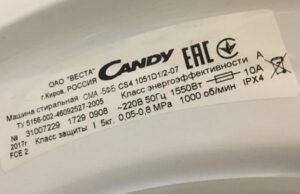 The efficiency of a washing machine directly depends on the power consumption. It would seem a little more, a little less, what's the difference? But it’s not for nothing that manufacturers place the marking with the power consumption of the Candy washing machine in the most visible place. If you carefully make the calculations, it will become clear that a too power-hungry machine will cost the user a pretty penny over several years of use. For this reason, when buying a unit, you should pay attention not only to its price, functionality and other characteristics, but also to consumption parameters. Which Kandy washing machines have the minimum power consumption?
The efficiency of a washing machine directly depends on the power consumption. It would seem a little more, a little less, what's the difference? But it’s not for nothing that manufacturers place the marking with the power consumption of the Candy washing machine in the most visible place. If you carefully make the calculations, it will become clear that a too power-hungry machine will cost the user a pretty penny over several years of use. For this reason, when buying a unit, you should pay attention not only to its price, functionality and other characteristics, but also to consumption parameters. Which Kandy washing machines have the minimum power consumption?
How is power determined?
The power consumption of washing units is calculated at the production stage. There is a whole algorithm for this:
- The new model is loaded with cotton linen by weight up to the maximum load volume;
- the temperature is set to 60 degrees;
- the unit is connected to a special device that reads the number of kW expended, and the cycle is started;
- The identified indicators are divided by the weight of the laundry and the duration of the program. The result is the power consumed by the machine per 1 kg of laundry per hour.
Important! As washing parameters vary, power consumption also changes.
Accordingly, if you put synthetic materials in the drum instead of cotton, fill the drum only halfway and set the express program rather than the standard one, the energy consumption parameters will change. If you try to identify some kind of pattern from all of the above, you will find that the final number of kW spent during washing is influenced by the following factors: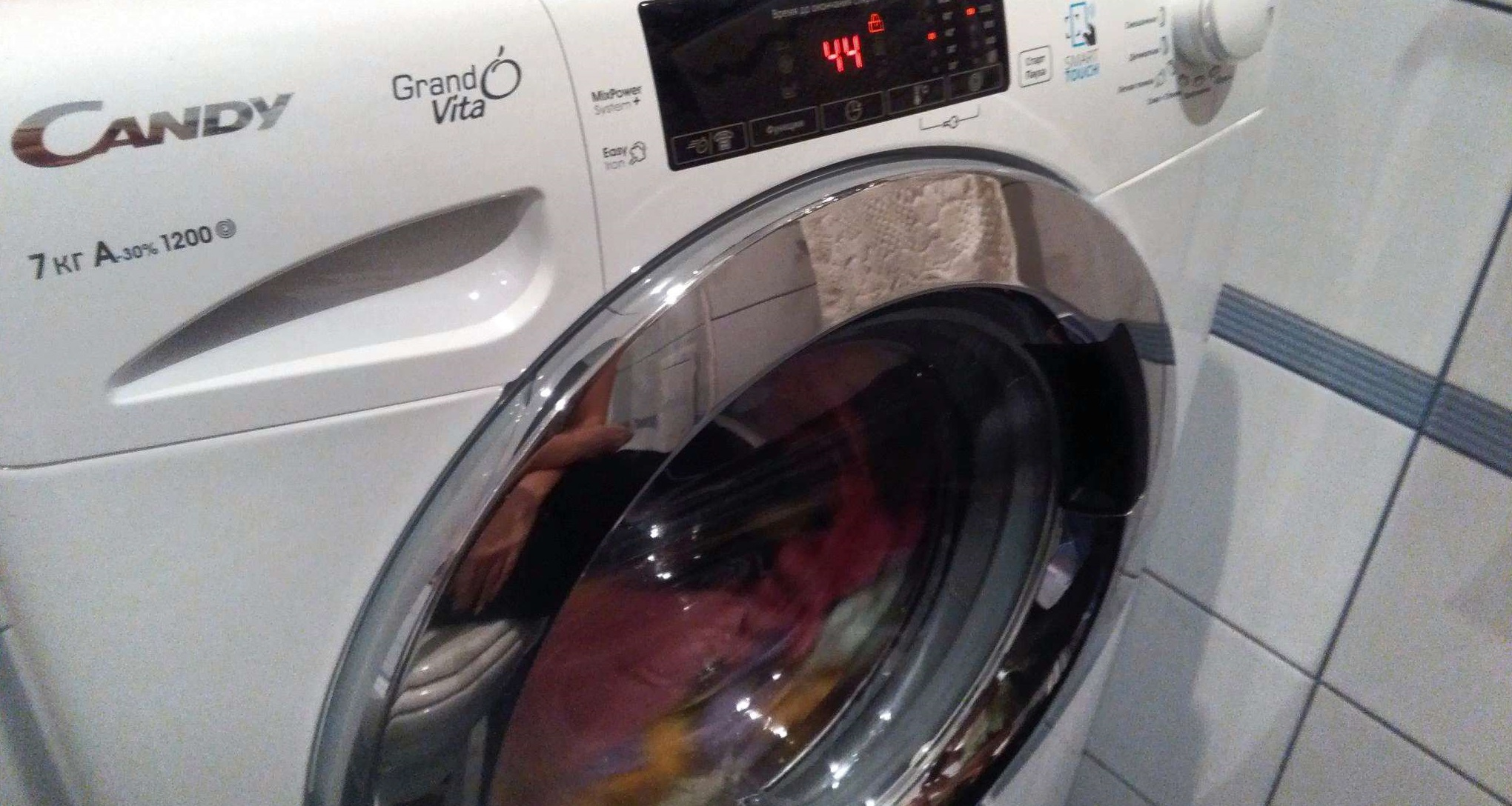
- type of washing machine (semi-automatic models “eat” much more than automatic models under identical washing conditions);
- type of fabric. Synthetic, blended materials, as well as wool products differ from cotton in weight and structure. This also affects power costs;
- selected mode. The lower the temperature and the shorter the wash, the less the heating element and motor work, therefore, the less electricity is consumed per cycle;
- loading volume. The units, the intensity of which is directly related to the weight of the laundry in the drum, also consume energy; accordingly, this parameter affects the power no less than the others.
Despite the fact that power consumption is a very variable parameter, the overall picture can be assessed with 100% confidence. After all, all units are tested in production using a single algorithm. Accordingly, if under certain conditions one unit consumes less than another, then this will be the case for any washing parameters.
Power letters
To make it easier to designate energy efficiency, a breakdown into energy efficiency classes was invented. They are designated by letters of the Latin alphabet from A to D, where A is the highest indicator, D is the lowest. As technology improved, becoming more and more economical, pluses began to be added to the class A marking in order to more accurately reflect the power consumption parameter. What does the breakdown by kW look like according to classes?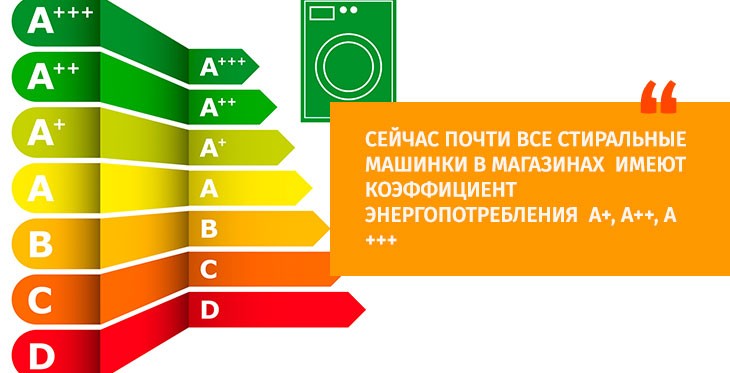
- A+++. By far the most economical class. Units with this marking spend 0.13 kW of electricity per 1 kg of laundry in 1 hour.
- A++. In 1 hour, 1 kg of cotton consumes 0.14-0.15 kW.
- A+. The maximum cost for the same parameters is 0.17 kilowatts per hour.
- A.When washing 1 kg of laundry, the machine consumes up to 0.19 kilowatts per hour.
- Power consumption reaches 0.23 kilowatts per hour per 1 kg of cotton.
- The machine “eats” 0.27 kW of energy per hour.
- The lowest efficient consumption class, when 0.31 kilowatts are consumed per kg of cotton per hour.
Knowing the energy efficiency class of the unit, you can easily calculate the power consumption per cycle. To do this, the power indicator is multiplied by the number of kg of laundry and the duration of the program in hours. For example, a machine of the most efficient class A+++ will spend about 0.65 kW for washing 5 kg of laundry for an hour.
Obviously, any calculations are approximate, since in everyday life washing machines are almost never washed in so-called ideal conditions, that is, corresponding to the conditions of measurements in production.
Note! The decoding of energy efficiency for semi-automatic washing machines is different, since the maximum power is graded differently.
Low energy consumption machines
Currently, it is extremely difficult to find a washing machine with the lowest energy consumption class. Class D does not occur at all, class C is extremely rare, and class B is currently assigned to the most voracious washing machines compared to other washing machines. Most Kandy machines are class A. Which models from this manufacturer should you prefer?
- Candy GVS34 126TC2/2. Unit with power consumption class A++. The cost of the washing machine is about $180. Maximum load 6 kg. There are a total of 15 programs in the arsenal (cancel spin, prevent wrinkles, wash delicate fabrics, wash baby clothes, wash jeans, wash mixed fabrics, wash silk, wash wool, economy program, pre-wash, quick wash, extra rinse).The spin speed reaches 1200 rpm.
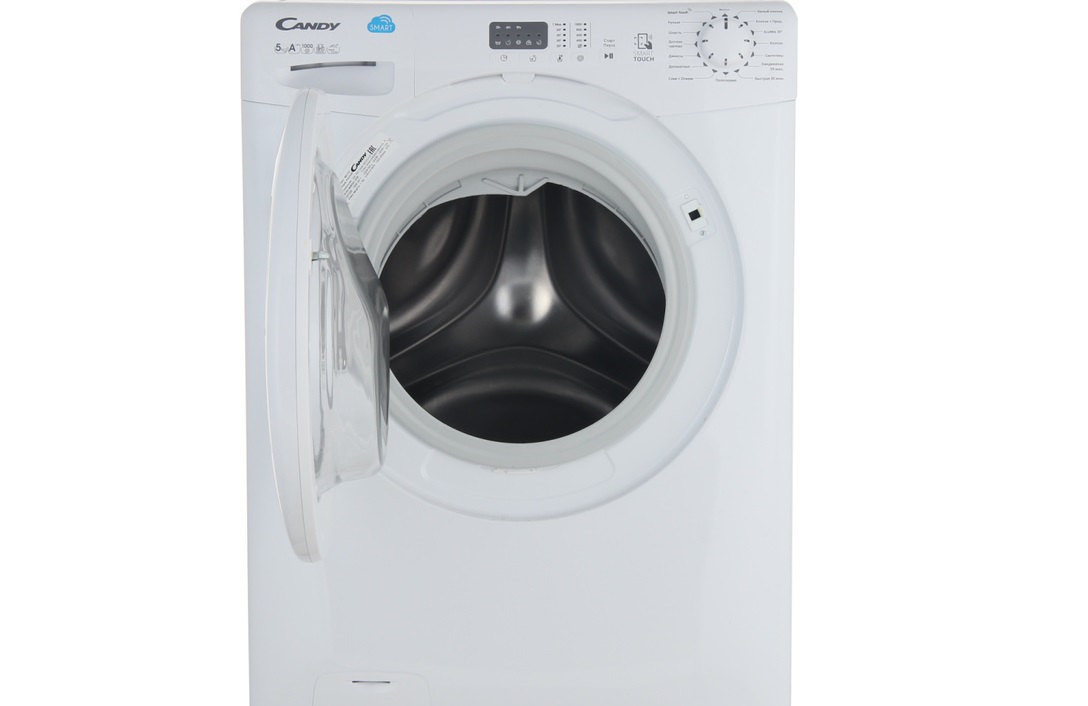
- Candy CS4 1051D1/2. Washing machine energy consumption class A+. The cost of the washing machine is $1450. The maximum load can be 5 kg. The functionality of the SM provides 16 programs, including spin canceling, washing delicate fabrics, washing children's clothes, washing jeans, washing mixed fabrics, washing sportswear, washing wool, an economical program, pre-wash, quick wash, and extra rinse. The spin speed reaches 1000 rpm.
- Candy CSS4 1072DB1/2. Power consumption class A. The average market price of the model is just under $170. Maximum load 7 kg. The machine has 16 programs, including spin canceling, washing delicate fabrics, washing children's clothes, washing jeans, washing mixed fabrics, washing sportswear, washing wool, an economical program, pre-wash, quick wash, and extra rinse. The spin speed reaches 1000 rpm.
- Candy GVS34 116D2/2. Washing machine energy consumption class A++. The average cost is about $170. Maximum load of SM is 6 kg. The spin speed reaches 1100 rpm. The functionality includes 15 programs, including: spin canceling, wrinkle prevention, washing delicate fabrics, washing baby clothes, washing jeans, washing mixed fabrics, washing silk, washing wool, economical program, pre-wash, quick wash.
You can select a washing machine model based on energy efficiency class using filters on the websites of household appliance stores or on Yandex.Market. Kandy machines have the lowest energy efficiency class - B.
Interesting:
Reader comments
- Share your opinion - leave a comment

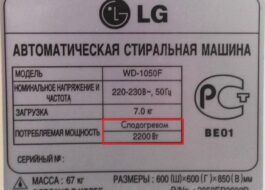



















Add a comment